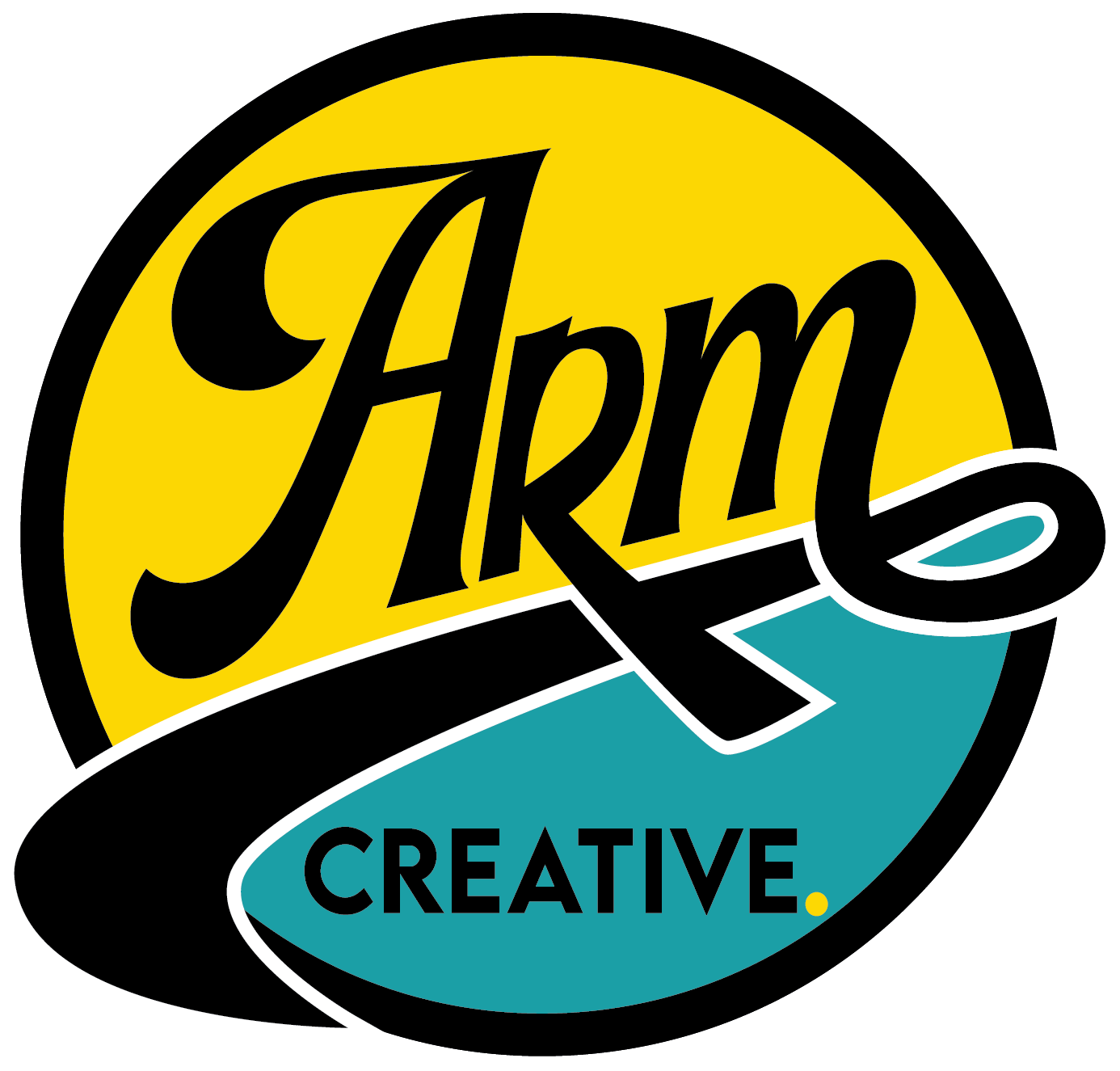What Your Brand Color Says About You
Ever wonder why there are 1000 different shades of the “same” color white? What to choose: Cotton cloud or marshmallow melody? Well, each shade and color has unique qualities to it and (whether we know it or not) evokes different emotions.
Look at your favorite logo. Countless studies have been done researching color psychology to understand the feelings evoked through colors. Businesses can review color psychology and implement it in their branding. Understanding this will be helpful in studying your brand's colors and if they align with your desired goals and objectives.
After speaking with our design team, we’ve learned a lot about color psychology and are excited to share. So grab your notebook and a pen because today, we are diving into what your brand color says about you!
The break down of the colors in the ARM Creative logo.
Reds
Think Target, Netflix, and Coca-Cola – All trailblazers and sporting the color red. Red is a bold choice for color and denotes energy and power. It makes a statement. With red, people are sure to turn their heads and start to pay attention.
Yellows
Picture McDonalds and Best Buy (and ARM Creative). Yellow brings in warmth and is associated with creativity. It will bring that happy energy to any logo.
Oranges
Next up, we have the color orange. We can look at Home Depot, Dunkin Donuts, and even Amazon. Orange can equate to being friendly and cheerful. When we compare those characteristics to the companies listed, it makes sense. Orange combines the qualities of red, powerful, and yellow, happy.
Greens
Green: the color of Starbucks, Spotify, and Whole Foods. Green has strong ties with nature, leading to feelings of freshness, growth, peace, and renewal.
Blues
With the color blue comes the feeling of trust, loyalty, and calmness. These attributes are shown through brands like American Express, Oral-B, and Dasani. According to a Lund University study, blue even promotes productivity and well-being in the workplace.
Purples
The color purple is associated with luxury, ambition, and creativity. Purple is featured in Taco Bell, Roku, and FedEx. Purple can make your brand stand tall among competitors.
Blacks
Nike, Uber, and many designer brands use black as their principal color. Black is associated with sophistication, power, and elegance. Black is also a color that will never go out of season, so its effect is long-lasting.
This is simply an introduction to how the colors of your brand can say more than you might think. Subconsciously, the colors of your brand convey meaning, emotion, and thought to your audience. It’s important to consider the beliefs, characteristics, attitudes, behaviors, and other psychographic data of your target audience when developing your branding—how will your brand be perceived by them? Take time to research and understand these details and pair that information with your goals and objectives to guide your branding efforts. When in doubt, get in touch with a branding agency that can help you—whether it's for a campaign or your organization.
Need some inspo? Check out this brand identity we developed for Pure Heart Foods.

